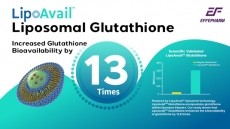Tea science stacks up for weight management, but concerns continue for extracts
On the other hand, researchers from Pennsylvania State University note that high-dose extracts may pose safety concerns, according to their timely assessment of the science to date in the Journal of Nutrition.
With the World Health Organization estimating that by 2015, there will be more than 1.5 billion overweight consumers, incurring health costs beyond $117 billion per year in the US alone, the opportunities for a scientifically-substantiated weight management food product are impressive.
The market for food, beverage and supplement weight management products is already valued at $3.64bn (2009 figures) in the US, according to Euromonitor. In Western Europe, the market was worth $1.3bn in 2009.
Green tea has been studied extensively for its potential in the weight management category, with the compound epigallocatechin gallate (EGCG) highlighted as a key component.
Three mechanisms have been proposed: EGCG could increase energy metabolism and fatty acid oxidation; inhibit fat cell development (apidogenesis); and/or reduce lipid absorption and increase fat excretion.
It has also been reported that caffeine must also be present as, for EGCG to aid weight loss, a stimulated nervous system is needed.
However, Dr Lambert said the underlying mechanism seems to be reduced absorption of dietary fat, although green tea may also stimulate energy expenditure. “The polyphenols seem to be the active components, but the interaction between tea poylphenols and caffeine has not been well-studied,” he said.
Dr Josh Lambert, assistant professor in the Department of Food Science at Penn State told NutraIngredients.com that laboratory studies and small-scale human intervention studies “indicate that consumption of tea might promote weight loss, help maintain body weight following weight loss, and prevent the development of some diseases associated with obesity such as diabetes and fatty liver disease”.
“The effective doses seem to be 3 to 10 cups of green tea per day,” he added.
Green or black?
The health benefits of tea have been linked to the polyphenol content of the tea. Green tea contains between 30 and 40 per cent of water-extractable polyphenols, while black tea (green tea that has been oxidised by fermentation) contains between 3 and 10 per cent.
The four primary polyphenols found in fresh tealeaves are epigallocatechin gallate (EGCG), epigallocatechin, epicatechin gallate, and epicatechin.
“The majority of studies have been conducted using green tea, whereas a more limited number of have been conducted on black and Oolong teas,” wrote Lambert and Kimberly Grove. “Given the high prevalence of black tea consumption (80 per cent of worldwide tea consumption), further studies on the anti-obesity effects of this beverage could be of great public health importance.”
Unanswered questions and cause for concern
The reviewers raise concerns over green tea extracts, noting that high doses taken in the form of a supplement may cause toxicity. “These toxicities have not been widely observed in controlled human studies, but the case-reports and animal data suggest the need for further investigation and would indicate the need for caution in dose selection,” they said.
For this reason, the reviewers noted questions remain unanswered regarding the therapeutic index when the tea compounds are consumed via the diet or taken as supplements, either as a pill or capsule. “Only with such a complete understanding can the potential benefits of dietary components with anti-obesity effects, including tea, be realized,” wrote Lambert and Grove.
Source: Journal of Nutrition
Published online ahead of print, doi: 10.3945/jn.109.115972
“Laboratory, Epidemiological, and Human Intervention Studies Show That Tea (Camellia sinensis) May Be Useful in the Prevention of Obesity”
Authors: K.A. Grove, J.D. Lambert














